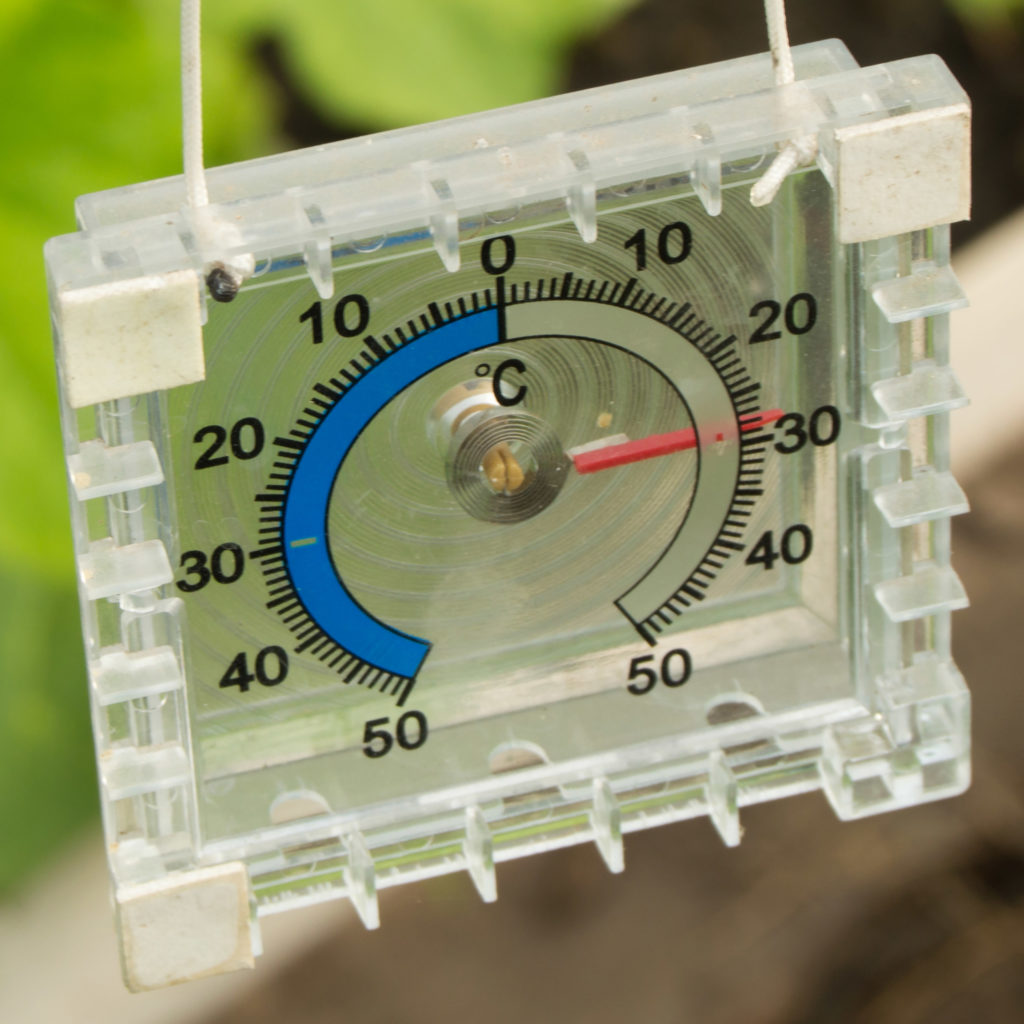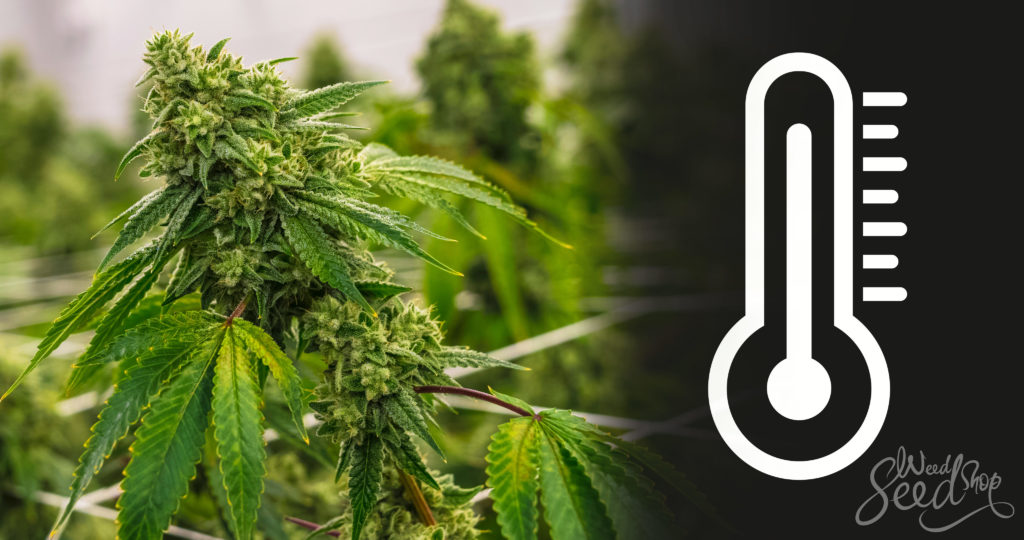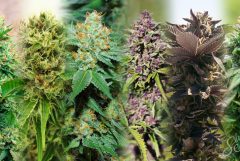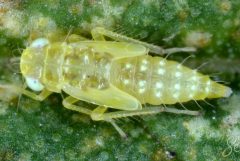When it comes to growing cannabis indoors, temperature is one of the most important factors. If you want a cannabis garden that grows thick, luscious buds and fast, then you should know how to measure and maintain the temperature in your grow room. To learn the ideal temperature and maintenance, keep reading now.
If you’re growing cannabis plants indoors, then temperature control is going to be one of the main factors of maintenance of your grow room. There are a lot of things to consider when managing the temperature, such as the location of your grow room and how many bulbs are inside.
Cannabis plants are sensitive to temperature and they need the ideal climate to be able to grow well. For that reason, if you want to grow luscious cannabis plants with high levels of THC, the maintenance of temperature in your grow room is extremely important. If you want to learn about the importance of the right temperature and how to keep it balanced, this article is for you.
The importance of ideal temperature

In general, cannabis plants enjoy an ideal temperature of between 20 and 25°C (between 68 and 77°F) when they are babies. When they enter vegetation, the temperature can be safely raised to 28°C (82°F) as a maximum. The temperature will naturally be lower at night-time, but the difference should never be greater than 10°C. In fact, maintaining a difference of 5°C between day and night is ideal.
The reason this is so important is because your cannabis plants rely on light and heat for photosynthesis. Light needs to be present in order to feed your plants, and heat is a natural consequence of that.
If there is not enough heat and the temperature is too low, there is not enough evaporation happening through the leaves.
This evaporation process assists the “suction” force required to draw nutrients from the roots into the leaves. The lesser evaporation results in lesser nutrients being sucked up into the plant and leaves, meaning that the plant ends up being smaller.
This can have all kinds of consequences later on, like an overload of nutrients in the soil but not enough in the plant material. This can lead to excess acidity in the soil, which can have a plethora of its own problems.
On the other hand, temperatures that are too high can have their own consequences. Although the plants might not die, they might grow incredibly slowly. When it gets too hot, cannabis plants are also much more susceptible to certain diseases, such as white powdery mildew.
So, as you can see, maintaining the temperature of your grow room is important for the overall health of your growing operation. The growth of your plants can come to a complete stop if you let the problem get out of hand.
Measuring the temperature of your grow room
To get an idea of the temperature in your grow room, you should always measure it at different locations. Not only does the temperature need to be in the ideal range, but the heat needs to be equally dispersed (we’ll get to in a little bit). So, for accurate readings, take your thermometer to different spots in your grow room and take note if some places are dramatically hotter than others.
Be sensible and don’t measure the temperature right beneath a light globe. When you are taking readings for temperature, be sure that you are holding the thermometer in the shade. The heat that is being emitted from the globe is not the same as the temperature of the air in your grow room. The reading you are looking for is of the air in your grow room.

Having said that, be mindful of exactly where your light bulb is. If it is too close to your plants, it can burn the top of your plant! While the temperature in the shade might be ideal, a bulb that is almost touching the top of your plant is definitely going to cause some damage.
Different parts of the grow cycle
As mentioned earlier, when your plants are younger, they can enjoy a slightly cooler temperature. You will need to change the temperature when they enter the vegetative state as well as managing the night time temperatures. In most growing operations you won’t have to add a heating element during the night, because heat will continue to be emitted from the globes.
- Seedling temperature: 20 – 25°C (68 – 77°F)
- Vegetative and Post vegetative temperature: 25 – 28°C (77 – 82°F), but ideally, 26°C
- Ideal night time temperature: About 5 °C (41 °F) lower than the chosen daylight temperature. 7 – 22°C (62 – 72°F)
For higher temperatures than this, there needs to be a great deal of air flow in the grow room to avoid burning.
Adding elements to control the temperature
Your grow room should already be equipped with lights, an extractor fan and some regular swivel fans that you probably have in your living room. The lights are going to act as the sun, providing the heat for your grow room. Most of the lighting used by growers produces a lot of heat in order to provide sufficient light, and for this reason you need an extractor fan to lower the temperature. If you are using fluorescent lighting, then you don’t confront as big a problem when it comes to temperature control.
An extractor fan is a device that sucks all of the hot air out of your grow room and sucks in fresh clean air from outside. It is imperative that every grow room is equipped with one. You can add other parts to it to deal with the pungent aroma, such as a carbon filter, but for the purpose of temperature it is not necessary.
The size of your extractor fan will be directly relative to the number of watts you have blaring in your grow room: Take the number of watts of your globes and half it. That is the size of your extractor fan in cubic meters.
For the dispersion of heat evenly around your grow room, you can use the swivel fan. You might only need one or two, depending on the size of your growing operation. Measuring the temperature in and around your grow room will give you an indication of exactly where they need to be.
Temperature during drying and curing
The temperature of your grow room has the potential to affect many things, including the humidity, the colour of the buds and leaves and the way the plants grow. However, another time to pay attention to temperature is when you are drying and curing your plants.
Temperature is key to maintaining ideal humidity levels during the drying and curing process, which is extremely important when it comes to producing the finest quality bud. During the first three days of drying, maintain a relative humidity of 45-50%, and then increase it back to 60%. This will slow the drying process down again until it is perfect. You can also lower the temperature (about 18°C) to slow down the drying process.
Temperature plays an important role from the very beginning of the growth cycle right until the very end when you are drying and curing!










